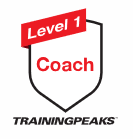Definition of the individual training zones through tests
The correct adjustment of the individual training area is a fundamental part of every single sport, because the athlete wants to finish every training session in the best way possible. If the training areas are only vaguely established, the training cannot be done effectively. It is ineffective (to low training stimulus) or even dangerous to health (to high training stimulus).
Scientific Background
In the endurance sports the training areas are defined proceeding from the individual lactate or anaerobe threshold. This threshold is often also known as functional threshold. Although scientifically this statement is not completely correct, it always means the point at which the proportion of anaerobe energy supply processes increases so much, that the end products, especially the lactate, can no longer be broken down by the body. This happens approximately at a lactate value of 4mmol/l.
The definition of the individual anaerobe/ lactate threshold can be done accurately in a laboratory with a breath analysis. As an alternative, an easy-to-repeat test (so-called field test) is explained here, which anyone can do themselves during training to check the performance level. Our Athletes complete these tests in regular intervals to check their performance level.
All tests are scientifically proven and no invention from us. :-)
Biking and running
30 min biking test
2 x 8 min biking test
30 min running test
Heart rate frequency threshold or performance threshold determination
Main part of the field test is a maximum speed test of 30:00 min. This is divided, after 10 minutes an split time is taken and then the average heart, power and distance of the following 20 minutes as the test value. This average number is used as the threshold value for calculating the training areas.
We therefore developed a standardized testing sequence, that will ensure an optimal test procedure concerning metabolism and training stress progression.
2. Alternative to the 30-min cycling test
In alternative to the sometimes very, even mentally, exhausting 30 min cycling test, a test with 2 maximum 8 minute intervals can be done. From the obtained value, 10% are deducted. The calculated value is used as the threshold value.
Threshold test for swimming
Here we use two of the most used tests to identify the threshold speed.
The goal and result of both tests are the same, the identification of the functional threshold speed.
1. Possibility - 1500 y/m test
Similar to biking and running, the following test is relatively easy (but it really isn't:-)) swim 1500 m/y timed, the reached average speed for 100 m/y is the (functional) threshold speed. Since this type of test is very demanding for the swimmer and sometimes leads to problems (to many swimmers on one swimming lane, motivational problems, simply wrong counting of lanes).
2. Possibility - 1x 400 y/m + 1x 200 y/m - CSS test
There is another informative and shorter test, the CSS-test for determining the critical swim speed. With this test, the 400 m/y and 200 m/y routes are swum on maximum speed within a training session. Both results are than entered in the following formula and the speed threshold is been calculated.
(400 time – 200 time) / 2 = CSS (time for 100)
Exemplary:
(6:15 min – 3:05 min) / 2 = 1:35 min/100
All training zones at a glance
Spreadsheet
| Training Zones | Swimming % CSS | Biking | Biking 1/min % FTHR | Running 1/min % of FTHR | Running Watt % of FTP | Scale | Intensity | Lactate | TSS per hour |
| Z1 | 84-87 | 45-54 | 60-67 | 70-82 | 50-74 | < 5 | < 0,75 | < 2,0 | 20 |
| Z2 | 92-94 | 57-74 | 70-82 | 85-88 | 78-86 | 5-6,5 | 0,75-0,85 | 2,0-2,5 | 30-40 |
| Z3 | 95-98 | 77-90 | 84-93 | 90-93 | 90-93 | 6,5-7,5 | 0,85-0,95 | 2,5-3,5 | 50-60 |
| Z4 | 99-103 | 92-105 | 95-104 | 95-99 | 95-99 | 7,5-9 | 0,95-1,05 | 3,5-4,0 | 70-80 |
| Z5 | 105-110 | 106-120 | 107-120 | 101-102 | 9-10 | 1,05-1,15 | >4,0 | ||
| Z5a | 100-102 | 104-119 | 100 | ||||||
| Z5b | 103-106 | 121 | 120 | ||||||
| Z5c | 107-120 | 140 |











